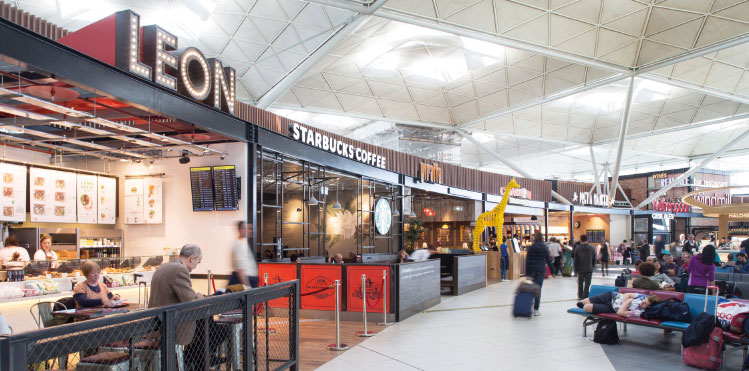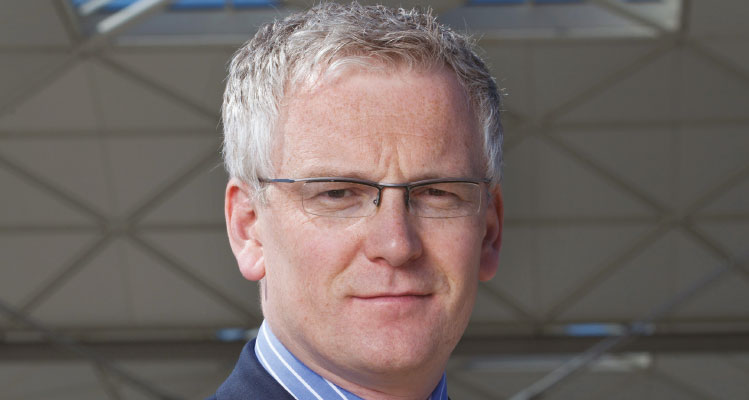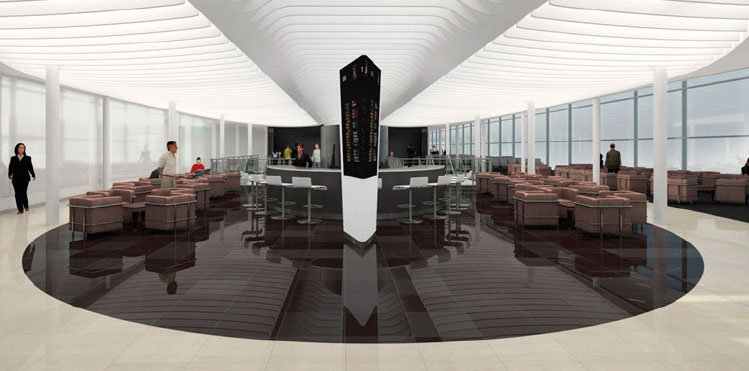
Having extended the departure lounge by over 60% the new experience coming to life at Stansted is not just modern in design but creates more space, provides 70% more seating and through the installation of flight departure screens along all main thoroughfares and in all shops, cafés, bars and restaurants, passengers can relax in the knowledge they are never far from the latest flight information.
Andrew Harrison, Managing Director, Stansted Airport, explained to Amy Hanna how, under the ownership of Manchester Airports Group, London’s third busiest airport is at long last able to seize the opportunities its flourishing catchment is offering up.
When Manchester Airports Group (MAG) acquired London Stansted Airport in February 2013, it was the potential of the gateway and its sprawling East London catchment that drew the largest UK-owned operator to London’s third airport. The opportunities presented by the swelling amplitude of the region’s business, the unparalleled advancements in life and technology sciences revitalising the links between London and Cambridge, and the movement of London’s growing populous to the east of the city, were at the time being drastically underserved, with the airport’s route network not meeting the demand of the catchment. “Stansted was punching below its weight, and we could see no logical reason for its going backwards over the last six or seven years prior to our acquisition,” the airport’s Managing Director Andrew Harrison explained to Airport Business. “Once we were able to sit down and have conversations with our existing carriers we could understand how they could grow – profitably for them and profitably for us, meaning we could give our customers what they wanted. And also then start the more long-term task of repositioning Stansted in the minds of airlines who don’t yet operate here – of changing their perception of the airport, which is based on history rather than reality.”
Two years on, and Stansted Airport’s growth has far exceeded the Group’s expectations. Reinforced by the strength of powerful airlines such as Ryanair and easyJet, passenger numbers are at an all time high, with the gateway serving over 20.9 million travellers in the 12 months ending in March, and throughput increasing by 16.3% year-on-year in the first three months of 2015 – making its the fastest growing airport in the UK. Already the simplicity of the airport’s one-terminal infrastructure and ease of accessibility to London provides much opportunity for passengers, and now Harrison’s objective is to build on these strengths under the gateway’s new ownership. Stansted is now in the middle of an £80 million (€111.4 million) investment programme, which will transform the airport experience for passengers – and change the way that Stansted is perceived.

Andrew Harrison, Managing Director, Stansted Airport: “I think Stansted will have to exist as a two runway airport in the future, we’re quite clear about that, but that will be demand driven.”
Stansted seeking long-haul
“Ours is a 24-year-old terminal and, though in many ways state-of-the-art in terms of its design –modular, easy to use, light and bright and all the aspects that Norman Foster first designed – it’s designed and laid out for how people used airports 24 years ago,” Harrison said. “We knew when we started out that the changes we planned would mean some disruption for the people using the airport in the short-term, but it’s been going really well, and we’re on target in terms of our schedule.” The first 10 months of the development saw the relocation of a 22-lane security facility to create the space for Stansted’s new departure lounge which provides 70% more space to relieve congestion, as well as 70% more seats and 50% more catering space.

Another important part of the airport’s modernisation project is the £8 million (€11.1 million) rejuvenation of its Satellite One. The development is being driven by the airport’s ambition to attract more passengers, airlines and, importantly, long-haul services.
The airport has now reached the end of Phase two of its terminal transformation, the latest phase of the departure lounge development a contemporary, convenient and stylish space that is home to an exciting new line up of cafés, bars and restaurants. The development of this new and exciting zone has created a real focus point in the passenger journey through the departure lounge and attracted remarkable interest from the food & beverage industry, with over 70 tenders received for the 12 positions available, including many airport firsts and brand new concepts. “We worked with operators to come up with very different ideas,” Harrison stated. “For example, we’ve got celebrity chef James Martin’s first foray into the food & beverage market, Coast to Coast – a new and emerging dining brand, and Starbucks, which for the first time has integrated an alcohol and evening tapas menu into their coffee shop. Ours is one of the busiest Starbucks in the UK – and old favourite that Stansted is known for, but we’ve also tried to add some newness into it, and be a bit more inventive in terms of what we can bring.”
Stansted has now entered the third Phase of its development, which will see the rejuvenation of the old food & beverage area and the implementation of brand new retail facilities. The tendering stage, in which the airport received an overwhelming number of responses, has now been completed, and the planning segment of the third phase continues.
Another important part of the airport’s modernisation project is the £8 million (€11.1 million) rejuvenation of its Satellite One. Part of a wider £260 million (€361.7 million) investment programme, this development will not only make the area sleek, modern and contemporary in style but provide enhanced passenger facilities, and is being driven by the airport’s ambition to attract more passengers, airlines and, importantly, long-haul services. “It’s about upgrading our product so that it’s ready for more scheduled carriers and long-haul carriers,” Harrison clarified. “Over the longer term, our plan is to diversify the range of routes and carriers to an extent, bringing in a broader range – a greater mix. That doesn’t mean dilute what we have, but instead enriching it, providing more choice. At the moment we feel that the catchment area hasn’t been fully served, and until, say, Ryanair begins transatlantic and long-haul connections to the east and west that demand remains unmet. There’s an emerging need and it’s getting stronger and stronger as the story between East London and Cambridge gets told more strongly. People are starting to realise just how important to the UK economy this corridor is, therefore it does need those long-haul routes.”
Looking to the future, Harrison explained that demand will dictate the airport’s further growth. The airport has the capacity to more than double its current throughput to around 40-45 million passengers a year within the existing airport boundary and approved environmental limits. Making use of Stansted’s spare capacity also has the potential to generate an extra 10,000 on-site jobs and £4.6 billion (€6.4bn) in additional economic activity, demonstrating the vital role the airport has to play in not just supporting economic growth and development in the region, but also international connectivity for the UK to support increased trade and investment.
And with so much growth taking place in the east of London, he said, Stansted can only continue to grow. “I think Stansted will have to exist as a two runway airport in the future, we’re quite clear about that, but that will be demand driven,” Harrison stated. “Given the fact there will be so much growth in the east, that all the runway demand should be provided in the west doesn’t make sense, so in order to be able to facilitate the growth of east London and Cambridge – I think it’s inconceivable that Stansted won’t at some stage think about a second runway.”







